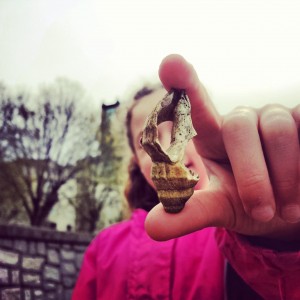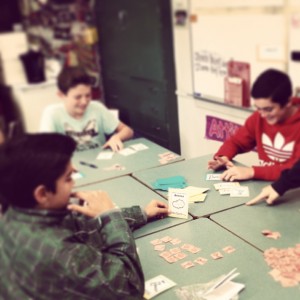My educational commitments
My Philosophy is based on a trifecta of a healthy balance between the mind, body and heart. When one of these elements is missing, the others also suffer; therefore it is in our best interest to foster the whole person.
MIND
One of the most overwhelming concepts I had not considered before beginning my Bachelor of Education program at the University of British Columbia, is that the careers we are preparing our students for may not even exist yet. How are we as educators to know what to teach our students? My teaching practice focuses on skills that can be adapted to any situation:
a) Critical thinking: Are my lessons teaching students to look at issues from all sides and come to rational moral conclusions, rather than simply ‘following the crowd’?
b) Technology: Are my lessons teaching students to make the most of the available technology? Are my students able to effectively use technology to research and present knowledge?
c) Community building: Are my lessons allowing for students to improve their team building and collaboration skills?
 I believe motivation is a key to my student’s success. We already know education opens doors and provides them with the opportunity to reach their full potential. It is the teacher’s responsibility to engage the students in the subject matter and create meaning from the curriculum. As a student, I find it very frustrating to invest energy learning about subjects and creating projects I don’t believe will help me in the future. I believe it is my duty to teach why knowledge is important and how to use it outside of the classroom.
I believe motivation is a key to my student’s success. We already know education opens doors and provides them with the opportunity to reach their full potential. It is the teacher’s responsibility to engage the students in the subject matter and create meaning from the curriculum. As a student, I find it very frustrating to invest energy learning about subjects and creating projects I don’t believe will help me in the future. I believe it is my duty to teach why knowledge is important and how to use it outside of the classroom.
I believe in teaching students with a wide variety of strategies to benefit their different learning needs. Some lessons need to be taught several times in various ways so that the entire class may understand the concept. This is where games, discussion, kinetic activities, and art come into play. My experience during my practicum has shown me the importance of flexibility when it comes to lesson planning, and allowing for lesson revision.
BODY
When students have the knowledge and power to make good decisions for their body, they are able to pay better attention in class and have a positive self-image. I believe in using daily exercise that can be integrated into lessons or routines. Daily exercise is also a great way of clearing the students’ minds and helping them refocus for the tasks ahead. There are many students who have the tendency to create distraction for themselves or get into trouble if they are told to “sit still and listen” for too long. Body-breaks are a great way of keeping them engaged. What we eat also plays a significant role on how we are able to learn and focus throughout the day. It is is important to me that student are taught how to make healthy choices that they can continue throughout their lives.
 We are so fortunate to live in such a beautiful place where outdoor education and a wide variety of ecosystems are available to us. I believe outdoor spaces create a sense of wonder for students that encourages creativity. Nature hikes, classroom gardens, interactive outdoor activities, and simply bringing the class outside for a reading circle are ways of breaking out from the four walls of the classroom.
We are so fortunate to live in such a beautiful place where outdoor education and a wide variety of ecosystems are available to us. I believe outdoor spaces create a sense of wonder for students that encourages creativity. Nature hikes, classroom gardens, interactive outdoor activities, and simply bringing the class outside for a reading circle are ways of breaking out from the four walls of the classroom.
heart
 My first priority as an educator is to provide a safe, collaborative environment. Spending time to establish a positive, happy classroom environment benefits all spheres of learning. Students can not reach their full potential if they are suffering from social anxiety or bullying. The idea behind Social Emotional Learning is that our minds work much better when we are enjoying how we are learning.
My first priority as an educator is to provide a safe, collaborative environment. Spending time to establish a positive, happy classroom environment benefits all spheres of learning. Students can not reach their full potential if they are suffering from social anxiety or bullying. The idea behind Social Emotional Learning is that our minds work much better when we are enjoying how we are learning.
“Students do not learn alone but rather in collaboration with their teachers, in the company of their peers, and with the support of their families. Emotions can facilitate or hamper their learning and their ultimate success in school.”
– Joseph E. Zins et al.
I believe in teaching students conflict resolution strategies so that they feel confident in their daily interactions. The first step in this process is developing a strong sense of community, where students feel safe to be open in discussing their feelings. Secondly, providing students with an emotional vocabulary so they can properly express themselves, prevents inappropriate verbal and physical attacks. The focus of restorative justice is not blame, rather repairing the relationship and preventing the issue from arising again. Being metacognative when they are feeling overwhelmed or angry helps students realize when they need to defuse the situation. When students are able to prevent and resolve conflicts in a positive way, they can focus more of their energy into learning the subject matter.
